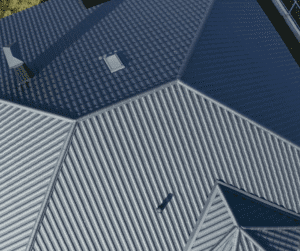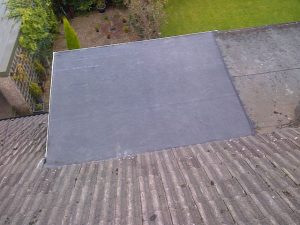A roof is one of the most important parts of any building, as it serves as protection from external elements. When it comes to choosing the right roofing style, homeowners have a wide variety of options available to them. Different roofing styles have their unique advantages and disadvantages that should be carefully considered before making a decision. In this article, we will discuss the pros and cons of five different roofing styles to help you make an informed decision for your home.
Roofing Style 1: Asphalt Shingles
Asphalt shingle roofing is one of the most popular roofing styles in North America. It is made of a base material that is coated with asphalt and covered with small granules. Here are the pros and cons of this roofing style:
Pros:
(i). Affordability: Asphalt shingles are one of the most affordable roofing options available, making them an excellent choice for homeowners on a budget.
(ii). Easy Installation: Asphalt shingles are easy to install, which means that installation costs are lower than other roofing materials.
(iii). Wide Variety of Colors: Asphalt shingles are available in a wide variety of colors, which means that homeowners have many options to choose from to complement their home’s exterior.
Cons:
(i). Short Lifespan: Asphalt shingles typically have a shorter lifespan compared to other roofing materials, lasting only around 15-30 years.
(ii). Susceptible to Weather Damage: Asphalt shingles are vulnerable to damage from high winds, hail, and extreme temperatures.
(iii). Environmental Impact: Asphalt shingles are not environmentally friendly and are difficult to recycle, which means they contribute to landfill waste.
 Roofing Style 2: Metal Roofing
Roofing Style 2: Metal Roofing
Metal roofing is a popular roofing style known for its durability and low maintenance. It is made of metal sheets or tiles, which are available in a variety of materials such as steel, aluminum, and copper. Here are the pros and cons of this roofing style:
Pros:
(i). Durability: Metal roofing is extremely durable and can last up to 50 years or more with proper maintenance.
(ii). Energy Efficient: Metal roofing reflects solar radiant heat, which means that it can reduce cooling costs by up to 25%.
(iii). Eco-Friendly: Metal roofing is environmentally friendly as it is made of recyclable materials and is 100% recyclable.
Cons:
(i). Cost: Metal roofing can be more expensive than other roofing materials, which means that it may not be suitable for homeowners on a tight budget.
(ii). Noise: Metal roofing can be noisy during heavy rain or hailstorms, which may be a concern for homeowners living in areas with frequent storms.
(iii). Dents: Metal roofing can dent easily if struck by heavy objects, such as tree branches, which can be costly to repair.
Roofing Style 3: Tile Roofing
Tile roofing is a popular roofing style that is commonly used in Mediterranean and Spanish-style homes. It is made of clay or concrete tiles that interlock to form a weather-resistant barrier. Here are the pros and cons of this roofing style:
Pros:
(i). Aesthetically Appealing: Tile roofing has a unique and attractive appearance that adds character and value to any home.
(ii). Long Lifespan: Tile roofing can last up to 100 years with proper maintenance, making it a long-term investment for homeowners.
(iii). Fire Resistant: Tile roofing is fire-resistant, which means that it can help protect your home from fire damage.
Cons:
(i). Cost: Tile roofing can be more expensive than other roofing materials due to its high-end appearance and durability.
(ii). Heavy Weight: Tile roofing is heavier than other roofing materials, which means that it may require additional support to hold the weight of the tiles.
(iii). Fragility: Tile roofing is fragile and can crack if walked on or if heavy objects, such as tree branches or hail, fall on it. This means that repairs can be costly.
Roofing Style 4: Slate Roofing
Slate roofing is a high-end roofing style that is known for its durability and unique appearance. It is made of natural slate tiles that are mined from quarries. Here are the pros and cons of this roofing style:
Pros:
(i). Long Lifespan: Slate roofing can last up to 100 years or more with proper maintenance, making it a long-term investment for homeowners.
(ii). Low Maintenance: Slate roofing requires little to no maintenance, which means that it can save homeowners time and money in the long run.
(iii). Fire Resistant: Slate roofing is fire-resistant, which means that it can help protect your home from fire damage.
Cons:
(i). Cost: Slate roofing is one of the most expensive roofing materials available, which means that it may not be suitable for homeowners on a tight budget.
(ii). Heavy Weight: Slate roofing is heavy and requires additional support to hold the weight of the tiles.
(iii). Fragility: Slate roofing is fragile and can crack if walked on or if heavy objects, such as tree branches or hail, fall on it. This means that repairs can be costly.
 Roofing Style 5: Flat Roofing
Roofing Style 5: Flat Roofing
Flat roofing is a modern roofing style that is commonly used in commercial buildings and modern homes. It is typically made of materials such as TPO, PVC, or EPDM. Here are the pros and cons of this roofing style:
Pros:
(i). Affordability: Flat roofing is one of the most affordable roofing options available, which makes it an excellent choice for homeowners on a budget.
(ii). Easy Installation: Flat roofing is easy to install, which means that installation costs are lower than other roofing materials.
(iii). Space Utilization: Flat roofs can be used for additional space, such as rooftop gardens or solar panel installations.
Cons:
(i). Poor Drainage: Flat roofs can have poor drainage, which means that water can accumulate and cause damage if not properly maintained.
(ii). Limited Lifespan: Flat roofs typically have a shorter lifespan compared to other roofing materials, lasting only around 10-20 years.
(iii). Susceptible to Leaks: Flat roofs are more susceptible to leaks than other roofing styles, which means that they require regular maintenance to prevent water damage.
Conclusion
Choosing the right roofing style is an important decision that can impact the longevity, energy efficiency, and overall aesthetic appeal of your home. Each roofing style has its own unique advantages and disadvantages that should be carefully considered before making a decision. By weighing the pros and cons of each roofing style, homeowners can make an informed decision that best fits their needs and budget.
Any roofing style you choose can impact the longevity, energy efficiency, and overall aesthetic appeal of your home. At Vanity Roofing, we understand the importance of finding the perfect fit for your needs and budget. That’s why we recommend carefully weighing the pros and cons of each roofing style before making a decision. Contact us today to learn more about how we can help you choose the right roofing style for your home!


